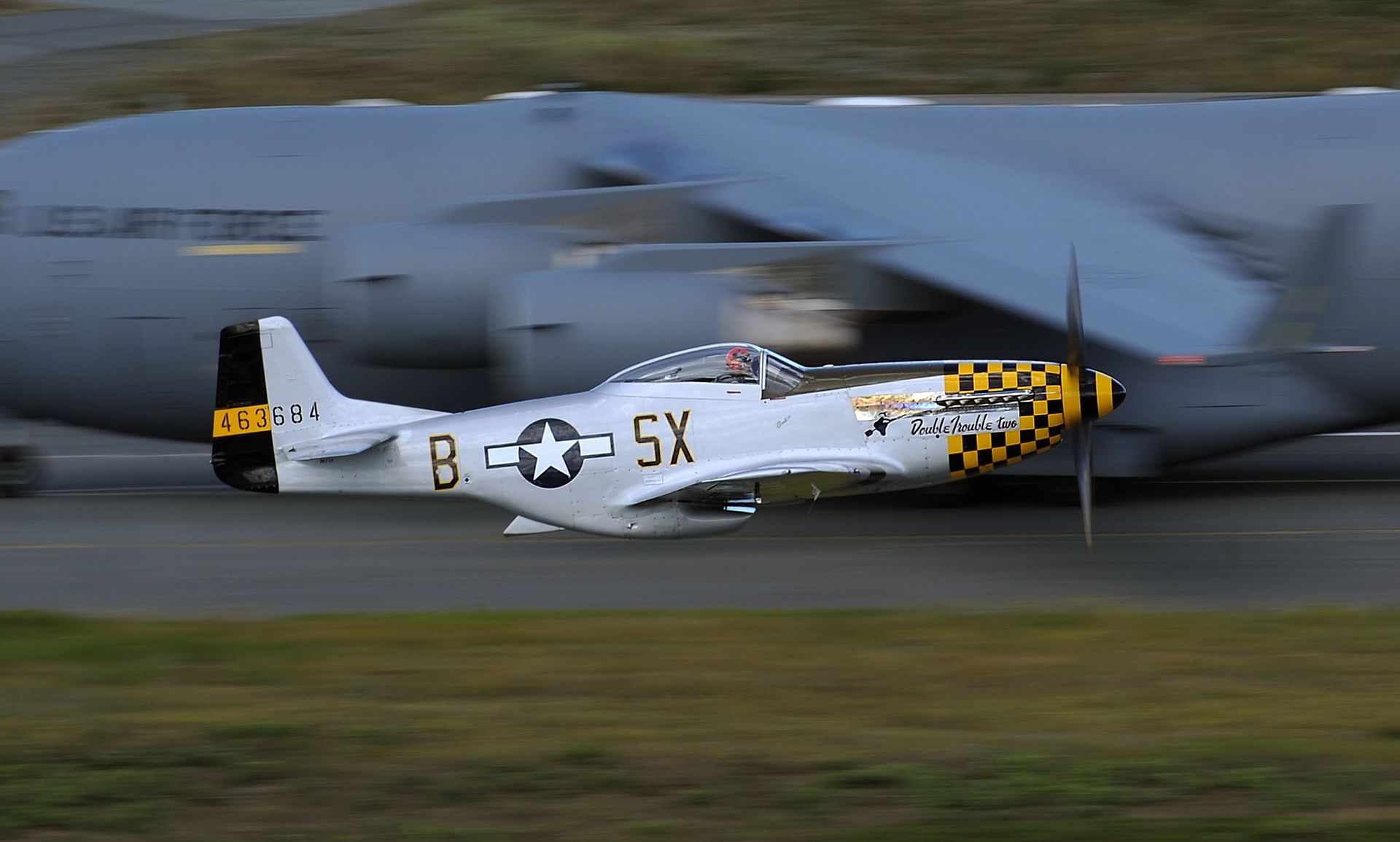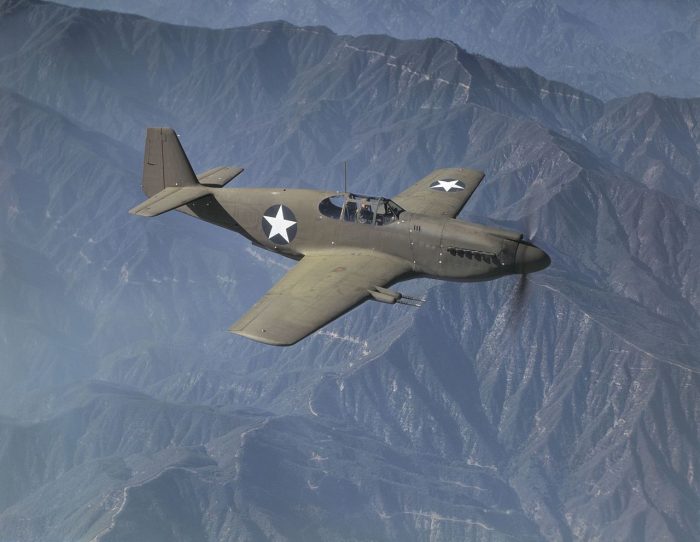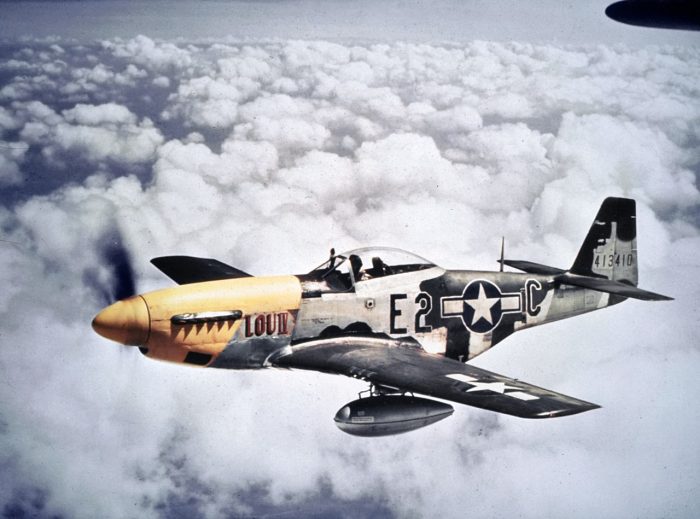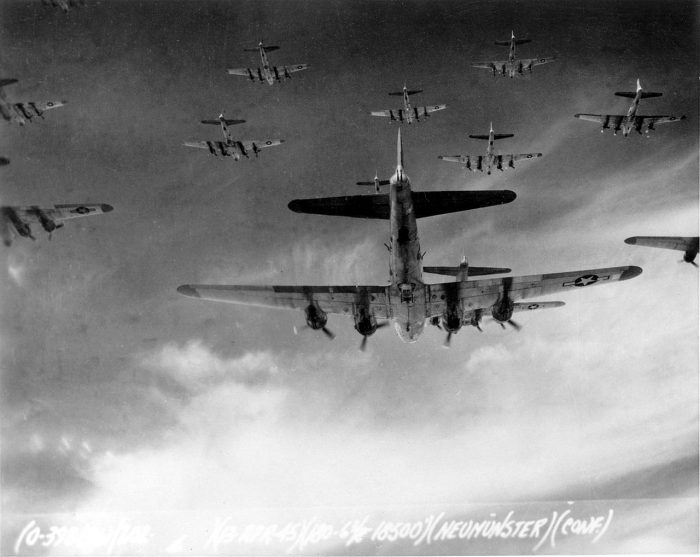Facts About the P51 Mustang: One of the Greatest Planes in History

The P-51 Mustang is considered one of the greatest fighter planes in history. It was the US military’s main fighter plane in World War II and continued to play an important role after the war ended.
Originally built for Britain’s Royal Air Force (RAF), the first Mustang was built in the early days of the war in only 117 days.
The first test flight took place on October 26, 1940. It showed the plane to be impressive with exceptional speed for a plane so complex and expensive. It was immediately able to outperform all other American fighter planes of the time.
In spite of its impressive abilities, it lacked power at higher altitudes and while climbing due to its Allison V-1710 V12 engine. So initially the plane was used in a limited capacity as an armed reconnaissance plane.

The RAF was the first to use the Mustang in battle over Germany. One day in October 1942, a group of Mustangs attacked ground targets around the Dortmund-Ems canal.
It was after the original Allison engines were replaced with Rolls-Royce Merlin engines that the plane became the effective fighter we know it as today. With the new engine, the plane was able to take part in long range operations without losing any performance.
The P-51 Mustang was designed to be so aerodynamic that it flew faster than the RAF Supermarine Spitfire which had a similar engine.

With the newly effective Mustangs in the fold, the US resumed their daytime bombing raids over Germany. The British had always preferred to bomb Germany at night to prevent losses but the Americans preferred bombing during the day as it made their attacks more accurate.
The problem for the Americans was that they did not have a proper long-range fighter plane that could protect the bombers. When losses soared higher than the military brass could stand, they suspended their bombing operations. The new capabilities of the Mustang allowed those raids to resume by utilizing the Mustangs to protect the bombers as far east as Berlin.
On the bombing raids the Mustang was able to outperform anything the German Luftwaffe had at their disposal. American bombers were free to attack both day and night which led to crippling losses for the Germans and landed a serious blow to the economy of the Reich.

The A-36 Invader was an early modification of the Mustang which allowed it to be used as a bomber. The Invader played a prominent role in the invasion of Italy and the attacks on Sicily.
One reason for the popularity of the P-51 Mustang was its attention to the comfort of the pilot. Engineers recognized the importance of supporting a pilot on long missions. Controls were placed in easy-to-reach locations and visibility was excellent in the plane.
Still, pilots were not able to relax too much while flying. When flying at high speeds, the plane took a large effort from the pilot to maneuver, but when the pilot put that effort in, the Mustang out-maneuvered anything else in the sky.
Another Article From Us: The Innovative Dornier Do 335 Pfeil Came Too Late to Save Germany
The Mustang was continually changed over the course of the war. The most popular model was the P-51D which introduced the Merlin engine. But the best version of the Mustang was probably the P-51H. This newer model shed 1,000 pounds from the P-51D’s weight.
The reduction in weight provided an increase in speed. This makes the P-51H the fastest piston-engine plane used by the Allies in WWII. The only things faster in the Allied forces were the jet-powered fighters that arrived in the final months of the war.
